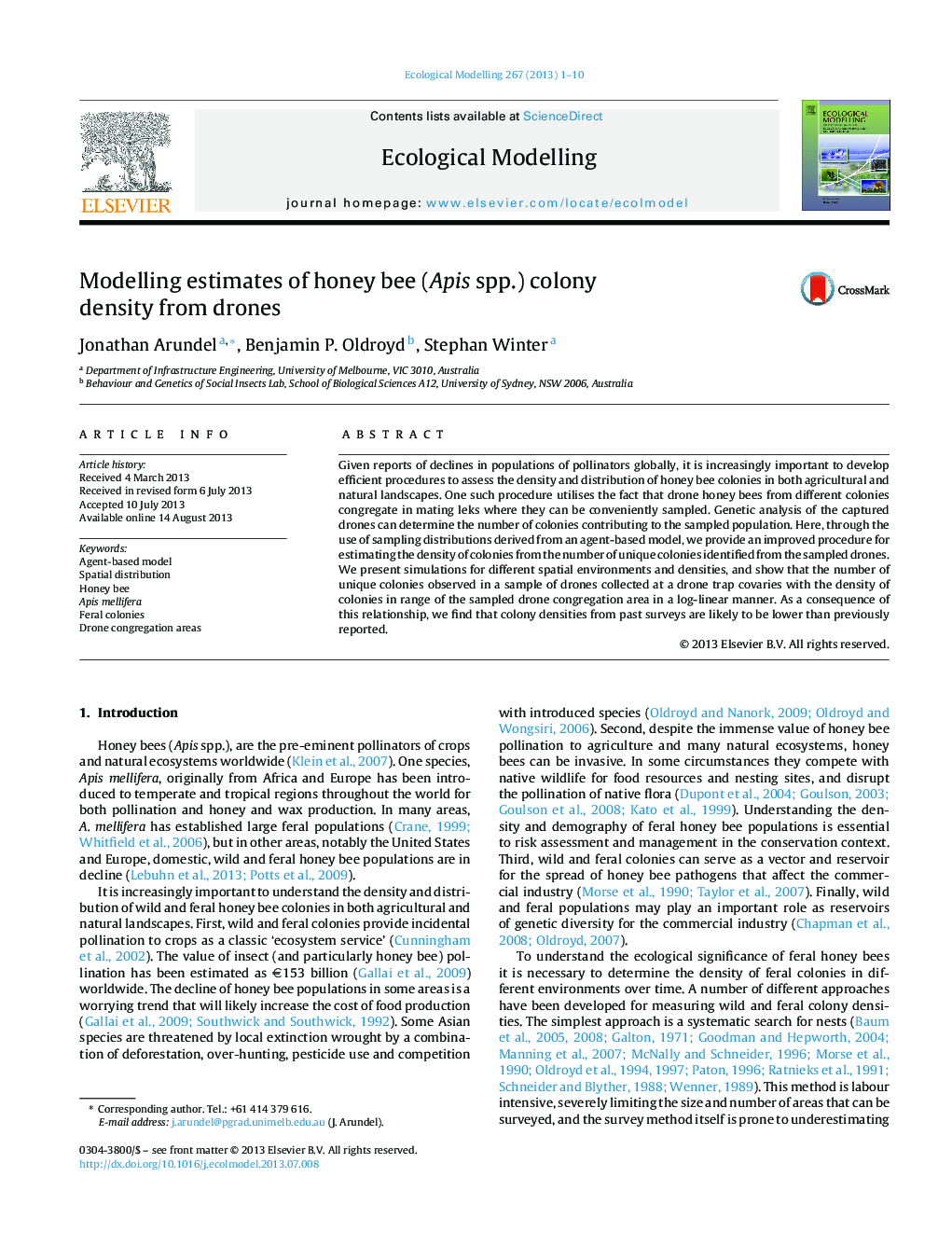| Article ID | Journal | Published Year | Pages | File Type |
|---|---|---|---|---|
| 4376051 | Ecological Modelling | 2013 | 10 Pages |
•Honey bee feral colony densities can be measured via new genetic techniques.•We construct an agent-based model to simulate the capture of congregating drones.•Colony numbers in captured drone samples have a log-linear relationship to density.•Colony densities from past surveys using drone traps are likely overestimated.
Given reports of declines in populations of pollinators globally, it is increasingly important to develop efficient procedures to assess the density and distribution of honey bee colonies in both agricultural and natural landscapes. One such procedure utilises the fact that drone honey bees from different colonies congregate in mating leks where they can be conveniently sampled. Genetic analysis of the captured drones can determine the number of colonies contributing to the sampled population. Here, through the use of sampling distributions derived from an agent-based model, we provide an improved procedure for estimating the density of colonies from the number of unique colonies identified from the sampled drones. We present simulations for different spatial environments and densities, and show that the number of unique colonies observed in a sample of drones collected at a drone trap covaries with the density of colonies in range of the sampled drone congregation area in a log-linear manner. As a consequence of this relationship, we find that colony densities from past surveys are likely to be lower than previously reported.
